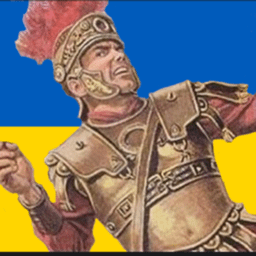Context from the original meme maker on Reddit
Context: Toward the end of the 18th century three partitions of the Polish–Lithuanian Commonwealth took place that ended the existence of the state, resulting in the elimination of sovereign Poland and Lithuania for 123 years. The partitions were conducted by the Habsburg monarchy, the Kingdom of Prussia, and the Russian Empire, which divided up the Commonwealth lands among themselves progressively in the process of territorial seizures and annexations. In reality Poland was dependent on its neighbours already since the beginning of XVIII century since its institution called ‘liberum veto’ was used in bad faith by compromised senators who could dissolute ‘the sejm’ by one veto. This led to complete lack of reforms, overtaxation, horrible international treaties and laughable army size. Polish patriots struggled throughout those years towards independence but their attempts failed (Napoleon’s liberation and two major uprisings). Without a free country many polish nobles, generals and soldiers chose or were forced to emigrate outside their homeland and fought in foreign wars, including wars of independence/uprisings.
USA: Tadeusz Kościuszko and Kazimierz Pułaski are the most famous Polish generals of American Revolutionary War. Both traveled to the United States and volunteered their military skills to the Revolutionary cause. Kościuszko was a brilliant engineer and tactician whose recommendations and strategies were instrumental in victories both in the Northern and Southern theatres of the war. Pulaski is called the “Father of the American Cavalry” and used his knowledge and prowess of mounted troops to support the Revolutionary war effort in the field. (I recommend reading more about both of them because they were absolutely based, for example Kościuszko in his last will left his American estate to buy the freedom of black slaves, including Jefferson’s own, and to educate them for independent life and work but several years after Kościuszko’s death, Jefferson pleaded his inability to execute the will due to age and the numerous legal complexities of the bequest. None of the resources that Kościuszko had earmarked for the manumission and education of African-Americans were ever used for that purpose. -fuck you tommy)
Haiti: In 1802, Napoleon dispatched a Polish legion of around 5,200 men to join the French forces in Saint-Domingue to suppress the Haitian slave rebellion. After they arrived and began to be thrown into battle, the Polish platoon learned that the French were trying to suppress an uprising by enslaved Africans fighting for their freedom from white masters. Polish soldiers admired their opponents, and eventually turned on the French army and joined the rebelling Africans. After Haiti gained its independence, Dessalines recognized the Poles and spared them when he ordered the massacre of most French whites and many free people of color (mulattos) on the island. He granted the Poles classification as Noir (black), who constituted the new ruling class, and in the constitution granted them full Haitian citizenship. Haiti’s first head of state Jean-Jacques Dessalines called Polish people “the White Negroes of Europe”, which was then regarded a great honour, as it meant brotherhood between Poles and Haitians.
Madagascar: Maurycy August Beniowski was a renowned military officer, adventurer, and writer from the Kingdom of Hungary, who described himself as both a Hungarian and a Pole. He is considered a national hero in Hungary, Poland, and Slovakia. He managed to convince the French to fund an expedition to set up a French colony on Madagascar. He quickly conquered the island. In his reports he described modernization of the island by building roads, hospitals and trading posts which is contested by French counterreports but in 1776 the inhabitants of Madagascar hailed Beniowski as their king – or ampansakabe in the Malagasy language. In June 1785, Beniowski takes the French trading post in Antongil Bay by storm, occupies the capital and erects several forts, a year later his efforts to take over the island are stopped by small French regiment.
Hungary: In the Hungarian Revolution of 1848, a Polish general, Józef Bem, became a national hero of both Hungary and Poland. He was entrusted with the defence of Transylvania as General of the Székely troops. As the result of agreement with the Hungarian government and Józef Wysocki, Polish infantry battalion of about 1,200 soldiers was formed. After the agreement, Wysocki organized the Polish Legion in Hungary, which contained 2,090 infantry soldiers and 400 Polish ułans. They took part in the siege of the Arad fortress in the spring of 1849 and participated in all important battles of the Revolution.
Italy: The Mickiewicz Legion was a military unit formed in 1848 in Rome by one of the most notable Polish poets, Adam Mickiewicz, who took part in the First Italian War of Independence. After unsuccessfully pleading with Pope Pius IX for support, Mickiewicz was joined by a military detachment of Polish emigrants, led by Mikołaj Kamiński. Growing to 120 members by June, the legion was commanded by Kamiński and engaged in several battles. It fought alongside others in Lombardy and on barricades of Genoa against the royalists to defend the Roman Republic. Apart from the Mickiewicz Legion, Polish generals Wojciech Chrzanowski and Ludwik Mierosławski, who had previously fought in Polish uprisings, also commanded Sardinian and Sicilian units respectively. Poles were part of the International Legion formed by Giuseppe Garibaldi in 1860 during the Expedition of the Thousand, which paved the way for the creation of a united Kingdom of Italy.
Kazimierz Pułaski is also the same Casimir Pulaski of Casimir Pulaski Day fame (both the holiday and the Sufjan Stevens song).
Was he the one they named the firefighters’ tool after?
According to a quick Google search, that one was a different Pulaski: Ed Pulaski who created the tool in 1911.
But Ed Pulaski’s Wikipedia article states he claimed to be a descendent of Casimir Pulaski, so it’s the same family line if so.



